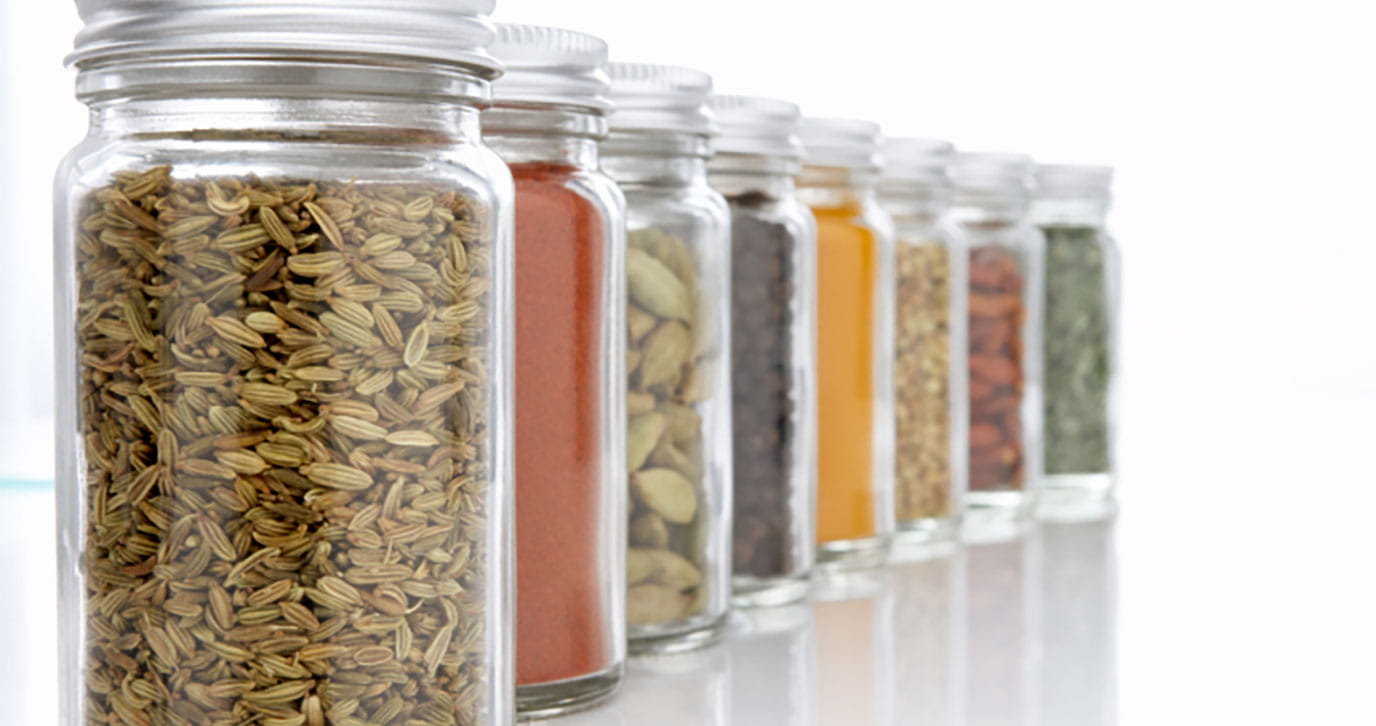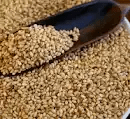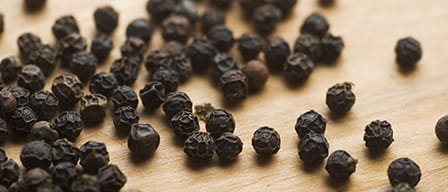
Anise


Sesame (Sesamum indicum L.) is an annual erect herbaceous plant that can grow to a length of 1.5 to 7 ft. It is a member of the family Pedaliaceae. Sesame is also known as sesamum, gergellum (Portuguese), til (Urdi, Hindi), goma (Japanese), ajonjoli (Spanish), hu-ma (Chinese) and benniseed.
Although apparently originating in Africa and India, this plant is currently cultivated in diverse regions worldwide from semi-arid tropics to temperate areas. China, India, Myanmar, Uganda, Turkey, Nigeria, Thailand, Bangladesh, Ethiopia, Mexico, and Pakistan are the major producers of sesame. Sesame seeds contain a very large amount of oil (50% to 60%), which is why it is called the “queen of oil seeds”. The seed-containing fruit capsule is about 2 inches long, erect, purple-brown in color, with multiple grooves. The total number of seeds can vary from 100 to 200 per capsule (1,2).

Sesame is an ancient crop that has been cultivated in Asia for more than 5000 years. It was at one time exported from India through the Red Sea and on to Europe and later from Egypt to Italy. Slaves from West Africa who were transported to the United States carried sesame seeds with them that they grew to produce “benne”. Sesame has a long history of use in traditional medicines. Black sesame seeds can be more expensive than other seeds due to the belief in Chinese traditional medicine that they have more health benefits. Global applications of sesame seeds, oil, leaves and roots used in folk medicines include treatment of hemorrhoids, wounds, asthma, blurred vision, abdominal pain and ulcers, alopecia, toothaches and gum disease, migraine, menstrual irregularities, and inadequate lactation, to name a few (1-4).
Sesame seeds are small (up to 2 mm by 4 mm in size), smooth or reticulate, flat and ovate. The seed colors vary considerably including white, yellow, grey, brown and black, depending on the variety and strain of Sesamum indicum. Black sesame seeds and white sesame seeds are the most available worldwide.


The flavor of sesame has been variously described as bitter, musty, nutty and woody (5).
Sesame has widespread use globally in salads, and in Asia the seed and oil are routinely used in cooking. Some Europeans substitute sesame oil for olive oil in cooking. The seed is included in the preparation of numerous food products, condiments and confectionaries, that create a unique nutty, roasted flavor. For example, besides being sprinkled on the surface of breads, sesame seeds are added into pastries, cakes and crackers. Sesame is a component of the spice mixture zahtar (oregano, thyme, sumac, toasted sesame seed) in the Middle East. Also in the Middle East tahini, a butter or paste, is made from ground roasted seeds. Other regional dishes with tahini include hummus bi tahini, made with lemons and chickpeas, and also possibly flavored with garlic, onion, cumin or paprika. Baba ganoush is a dip prepared from eggplant, tahini, garlic, lemon juice, olive oil, salt and pepper. A soft, fudge-like confection called halva/halvah, popular in the Balkans and Middle East, combines tahini, sugar, salt and vanilla. Sfouf, also known as yellow cake or curcuma cake, is a popular Lebanese snack made with wheat, tahini, aniseed, turmeric, sugar and pine nuts or almonds. In India til ke laddu is a small, rounded sweet product made with dry roasted til, clarified butter, roasted and crushed peanuts, unrefined cane sugar, and cardamom. Shirini konjedi is a Persian sesame brittle. The Chinese version of sesame paste, zhi ma jiang, uses roasted seeds that may be blended with peanuts. Chinese black sesame buns are made from steamed dough filled with a mix of toasted black sesame seeds, toasted peanuts, lard or butter, sugar and salt. The Japanese custard goma-dofu is prepared with sesame. Also in Japan, sesame is a constituent of the spice blend, shichimi togarashi (chili pepper flakes, orange peel, sesame seed, ginger, seaweed), and is in the sesame salt, gomasio (4).
The nutty flavor of the seeds is enhanced by roasting the raw seeds. If you are toasting a large amount at once you can heat them in the oven. Heating them in a skillet on the stovetop to a light brown color is easier to control and is faster. There is no need to add oil to the skillet, because sesame seeds are rich in oil.
Our understanding of how sesame seeds and other spices and herbs potentially benefit health is growing. Using diverse spices and herbs as seasonings has been shown to unlock new flavors and tastes that enhance our enjoyment of numerous foods and vegetables, while reducing our intake of added saturated fats, sugar and sodium. Explore ways to incorporate various spices and herbs to create healthy meals and expand your culinary experiences. Learn about recommendations for building a balanced and healthy diet.

Anise

Basil

Bay Leaf

Black Pepper

Black Seed

Cardamom
